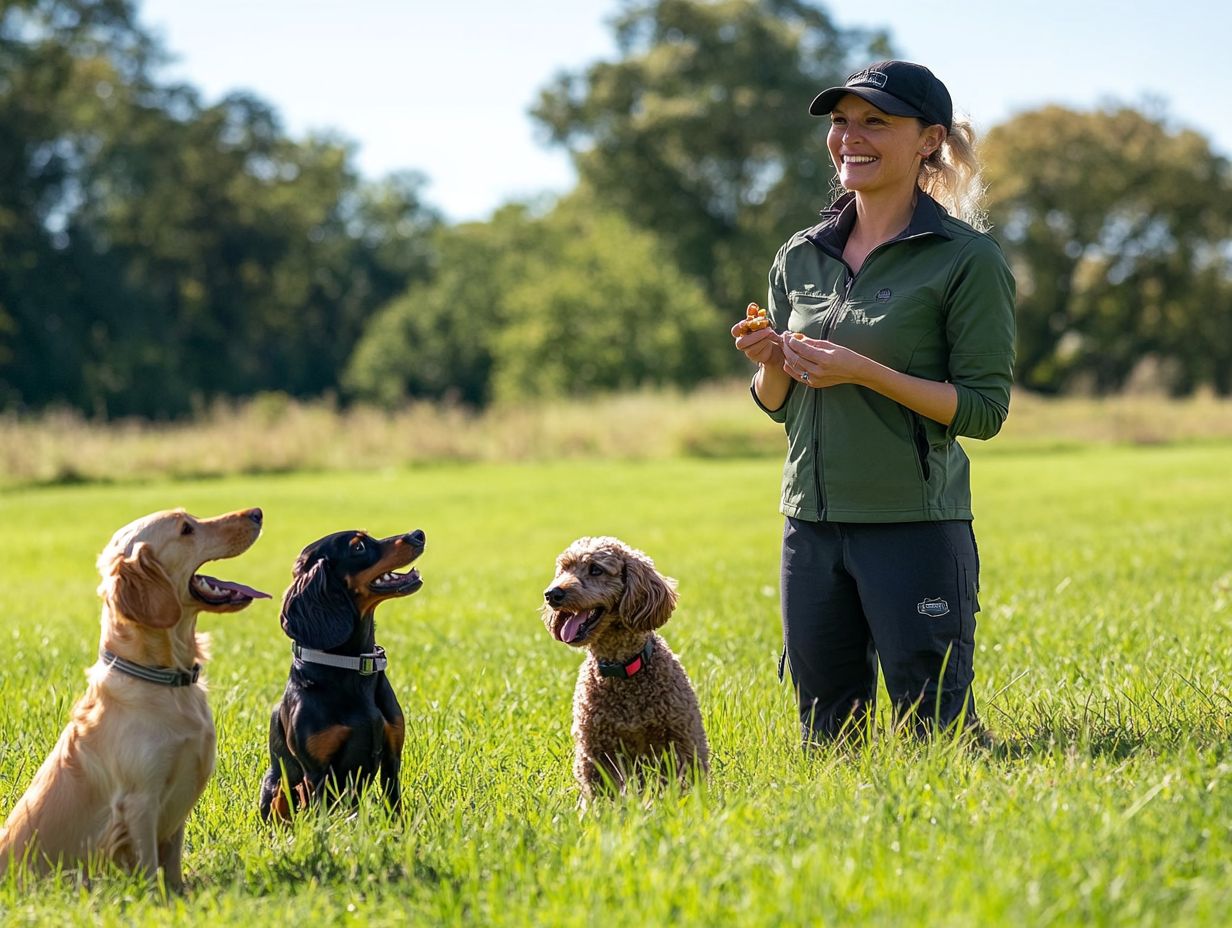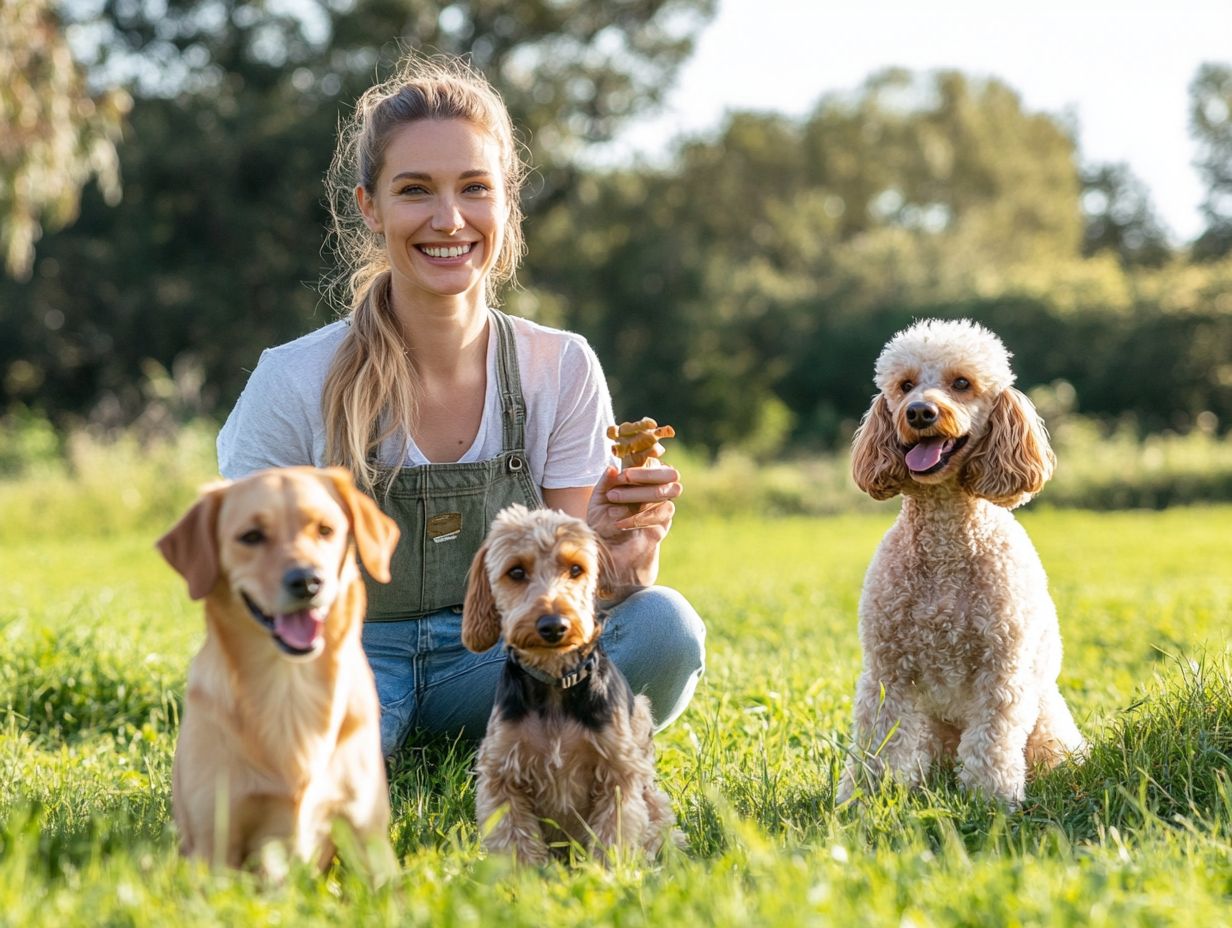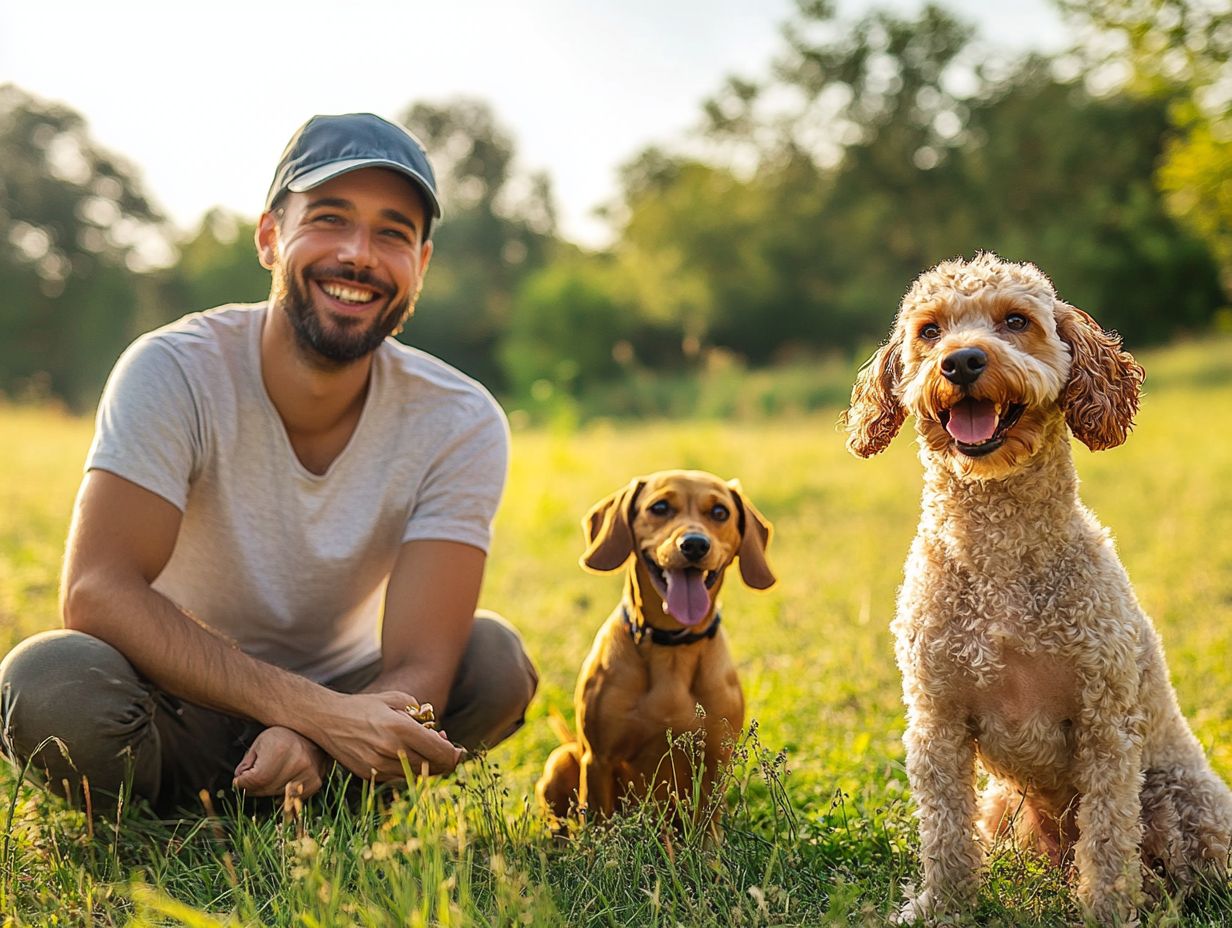Understanding Your Lifestyle and Needs

Assessing Your Living Situation
The living situation assessment is a crucial step in the dog selection process, as it helps determine the appropriate breed and evaluate the overall compatibility of a dog with a new home.
Different living situations, such as apartments, houses, or shared living spaces, present unique challenges and benefits that can influence which breed may be the best fit. For instance, an apartment might be better suited for a smaller family dog that can thrive on indoor activities, while a house with a yard can accommodate a larger breed that requires more space and outdoor play.
Considering factors such as breed size, energy levels, and temperament is essential for identifying dog-friendly homes, ensuring a mutually beneficial and healthy relationship that meets the needs of both the dog and the owner.
Evaluating Your Activity Level
Assessing your activity level is essential for selecting a dog breed that will thrive alongside you and seamlessly fit into your lifestyle. Different dog breeds have varying exercise needs and energy levels.
For instance, high-energy breeds like Border Collies or Siberian Huskies require substantial exercise and playtime to remain happy and healthy; they are well-suited for active individuals or families. In contrast, more sedentary breeds such as Bulldogs or Basset Hounds may be better suited for those with a less active lifestyle.
Considering both a dog’s grooming needs and exercise requirements can help create a more organized daily schedule, which, if followed, promotes positive and manageable behaviors for everyone involved. Ultimately, choosing the right breed for your lifestyle benefits both the owner and the dog.
Factors to Consider When Choosing a Dog Breed

Selecting a dog is a complex decision that necessitates careful consideration of various factors, including breed characteristics, temperament, and compatibility with your family dynamics, to ensure a mutually rewarding companionship.
Size and Energy Level
Size and energy level are two key factors that significantly influence a dog’s compatibility with your lifestyle and living environment. Understanding how these factors overlap and interact can help potential dog owners make informed decisions.
Size and energy level are interconnected; when assessed together, they provide valuable insight into a dog’s overall compatibility with an owner’s lifestyle needs. Generally, smaller breeds exhibit a wide range of energy levels; some may prefer short walks, while others may seek more vigorous activity. In contrast, larger dogs typically require substantial daily exercise to remain healthy and happy.
Mixed breeds can display unpredictable combinations of their parents’ traits, including energy needs, while purebreds tend to exhibit more consistent traits, allowing owners to better estimate their exercise requirements. By considering both size and energy needs, owners can ensure they choose companions that will seamlessly integrate into their lives.
Temperament and Trainability
Assessing a dog’s temperament and trainability is crucial to determine whether a breed’s characteristics align with the type of family and companionship the owner desires. Evaluating various aspects of a dog’s personality can reveal how they might respond in different situations, as well as whether they tend to be nurturing, playful, or protective.
This consideration is particularly important when determining the suitability of a dog breed for families with children or other pets. Early socialization is key to boosting a dog’s confidence and plays a significant role in their overall behavior. Incorporating training into the selection process ensures the best potential for a happy and fulfilling relationship.
Enrolling in structured dog training classes can lay the groundwork for proper manners and obedience.
Grooming and Health Needs

When selecting a dog, grooming and health needs are essential considerations, as they can significantly impact both your lifestyle as a dog owner and the long-term health of the dog itself.
Different breeds have varying grooming requirements. For instance, larger breeds may require less frequent grooming but could be more susceptible to joint issues that necessitate regular veterinary visits. In contrast, small breeds often need more frequent brushing to prevent matting, and their dental health may become a significant concern as they age.
Understanding the specific grooming and health needs of each breed not only ensures the best veterinary care for dogs but also helps owners anticipate how often they will need to schedule grooming sessions and veterinary appointments. Additionally, this knowledge highlights the importance of pet insurance for the future.
Researching Different Breeds
Researching dog breeds is a crucial step in the dog adoption process, as it helps potential owners understand the unique profiles and characteristics of different breeds, allowing them to make informed decisions.
Popular Breeds and Their Characteristics
Popular dog breeds often possess well-defined characteristics and behaviors that make them suitable for family life or working environments, offering valuable insights into their potential as companions or service animals. By understanding these unique traits, individuals can better identify which purebred dogs align with their lifestyle and needs.
For example, some breeds are known for their gentle disposition, making them excellent family pets, while others exhibit high energy levels, thriving in active households or as working companions. Recognizing common dog behavior patterns helps owners address their pets’ needs effectively, fostering a harmonious relationship.
Breeds like Labrador Retrievers are celebrated for their friendly nature, whereas Border Collies are often praised for their intelligence and strong work ethic. These examples illustrate the variety and adaptability of different breeds in fulfilling diverse human demands.
Specialty Breeds and Their Purposes

Specialty breeds are those whose primary functions extend beyond the common roles of companionship or hunting. These dogs may serve as working dogs, service animals, emotional support companions, or fulfill other specific purposes. A wide variety of dog breeds are designated for specialty roles, and the following is a partial list of some common examples.
- Working Dogs: Specialized breeds, such as German Shepherds, Dobermans, and Rottweilers, assist in tasks like search and rescue, protection, aiding individuals with disabilities, and guard duties.
- Herding Dogs: Breeds like Border Collies, Australian Shepherds, and Belgian Malinois are adept at managing livestock, showcasing their innate instincts and agility.
- Service Dogs: Breeds such as Labrador Retrievers and Golden Retrievers provide assistance to individuals with physical or emotional disabilities, including conditions like blindness, seizures, autism, or PTSD. Therapy and emotional support dogs also fall under the category of service dogs, though therapy dogs typically support others rather than their handlers. For example, therapy dogs often visit schools or hospitals to interact with children or the elderly.
- Hunting Dogs: Retrievers (such as Labradors and Goldens), pointers (like the Deutsch Drahthaar and English Pointer), and flushing spaniels (including English Springer Spaniels and Cocker Spaniels) assist hunters by retrieving game, detecting game birds, or flushing them from dense vegetation, respectively.
- Miscellaneous Purposes: Many dogs serve additional purposes, including drug detection (Drug Detection Breeds), locating individuals trapped under snow (Avalanche Rescue Breeds), or identifying termites (Termite Detection Breeds).
These various roles inform the specific training needs of specialty breeds, which may encompass unique aspects of dog training, such as obedience, agility, scent training, and other enrichment activities crucial for the physical and mental well-being of these dogs. Understanding how these roles enhance the quality of life for both the dogs and their owners can lead to rewarding and fulfilling relationships.
Meeting and Interacting with Potential Breeds
Meeting and interacting with potential dog breeds is a crucial step in the dog adoption process. This experience allows you to assess compatibility and ensures a positive and supportive human-dog relationship.
Visiting Shelters and Breeders
Visiting shelters and breeders allows prospective dog owners to meet a variety of dogs and understand the unique needs of rescue dogs and purebreds. This experience enhances the likelihood of finding a suitable match while educating individuals about best practices in pet adoption.
Specifically, prospective owners can gain insights into the characteristics of different dog breeds and how these traits align with their own lifestyles. Additionally, visiting dog shelters enables potential owners to assess dog compatibility in person, which is a crucial step toward fostering a successful relationship between the dog and its new owner.
By adopting from responsible shelters and breeders, individuals not only provide a loving home to a deserving animal but also contribute essential funds that help these organizations continue their vital work for dog welfare.
Observing and Interacting with Dogs
Before deciding to adopt a dog, it is essential to observe and interact with them to learn about their behavior and determine if they will fit into your lifestyle. This is particularly important because not all dogs have the same characteristics, and individual personalities can significantly influence their compatibility with different types of households.
Interacting with various breeds and sizes allows prospective pet owners to assess behavioral traits that may not be immediately apparent. For example, attending dog obedience classes enables owners to observe how a dog interacts with humans and other animals, providing insights into their level of socialization.
By paying attention to these details, future pet parents are more likely to make choices that align with their daily lives and expectations.
